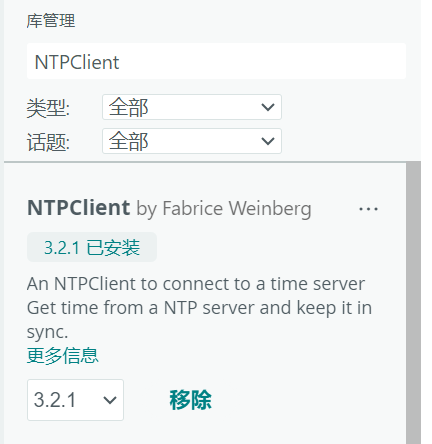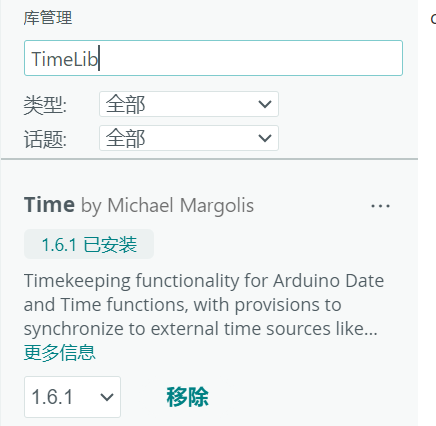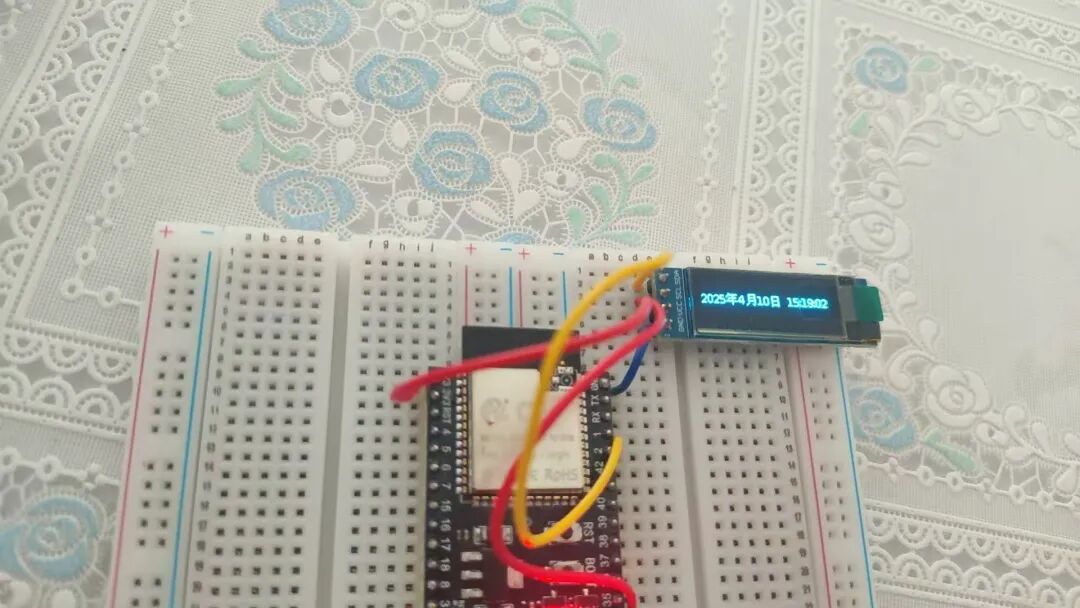The ESP32 has a built-in WiFi module, making it very simple and convenient to connect to WiFi.
The code is as follows:
#include <WiFi.h>
const char* ssid = "WIFI_NAME";
const char* password = "WIFI_PASSWORD";
void setup()
{
Serial.begin(115200);
WiFi.begin(ssid, password);
while (WiFi.status() != WL_CONNECTED) {
// statement
delay(500);
Serial.println("Connecting to WiFi...");
}
Serial.println("Connected to the WiFi network");
}
void loop()
{
}This session shares a case of displaying the current time on an OLED screen.
It requires the NTPClient.
You need to install this library first.

The NTPClient is a client program that uses the Network Time Protocol (NTP) to obtain the current time from a network time server.
The Network Time Protocol (NTP): NTP is an internet protocol used to synchronize clocks between computer systems.
NTPClient timeClient(ntpUDP, "pool.ntp.org", 28800, 60000); // GMT+8 timezone, update interval 60 seconds<span>pool.ntp.org</span>is a public NTP server pool that redirects your requests to nearby NTP servers. This is a convenient and commonly used option since you do not need to select a specific NTP server.<span>28800</span>: This is an integer representing the timezone offset in seconds. In this case,<span>28800</span>seconds equals 8 hours (28800 / 3600 = 8). This indicates that the code is configured to use the GMT+8 timezone, such as China Standard Time (CST).<span>60000</span>: This is an integer representing the time update interval in milliseconds. In this case,<span>60000</span>milliseconds equals 60 seconds. This means the<span>timeClient</span>object is configured to update the time from the NTP server every 60 seconds.
You also need to install a Time library.

In the Arduino environment, Time is a lightweight library primarily used for handling timestamps and datetime calculations, formatting, and synchronization.
The complete code is as follows:
#include <U8g2lib.h>
#include <WiFi.h>
#include <NTPClient.h>
#include <WiFiUdp.h>
#include <TimeLib.h>
// WiFi settings
const char* ssid = "TP-LINK_C5A2";
const char* password = "15750849198yy";
// NTP settings
WiFiUDP ntpUDP;
NTPClient timeClient(ntpUDP, "pool.ntp.org", 28800, 60000); // GMT+8, updates every 60 seconds
// OLED settings
U8G2_SSD1306_128X32_UNIVISION_F_SW_I2C u8g2(U8G2_R0, /*SCL=*/0, /*SDA=*/1, /*RESET=*/U8X8_PIN_NONE);
void setup() {
Serial.begin(115200);
// Initialize OLED
u8g2.begin();
u8g2.enableUTF8Print();
u8g2.setFont(u8g2_font_wqy12_t_gb2312);
// Connect to WiFi
Serial.print("Connecting to WiFi...");
WiFi.begin(ssid, password);
while (WiFi.status() != WL_CONNECTED) {
delay(500);
Serial.print(".");
}
Serial.println("\nWiFi connected");
// Initialize NTP
timeClient.begin();
while (!timeClient.update()) {
delay(500);
Serial.print(".");
}
setTime(timeClient.getEpochTime());
Serial.println("NTP time synced");
}
void loop() {
static unsigned long lastNtpUpdate = 0;
unsigned long now = millis();
// Sync NTP time every minute
if (now - lastNtpUpdate >= 60000) {
timeClient.update();
setTime(timeClient.getEpochTime());
lastNtpUpdate = now;
}
// Get current time
t = now();
char timeStr[20]; // Sufficient to store "2023年12月31日 23:59:59"
// Format time string
snprintf(timeStr, sizeof(timeStr),
"%04d年%02d月%02d日 %02d:%02d:%02d",
year(t), month(t), day(t),
hour(t), minute(t), second(t));
// Display time
u8g2.clearBuffer();
u8g2.setCursor(0, (32 + u8g2.getMaxCharHeight()) / 2);
u8g2.print(timeStr);
u8g2.sendBuffer();
delay(200); // Reduce refresh rate to minimize flicker
}Effect:
